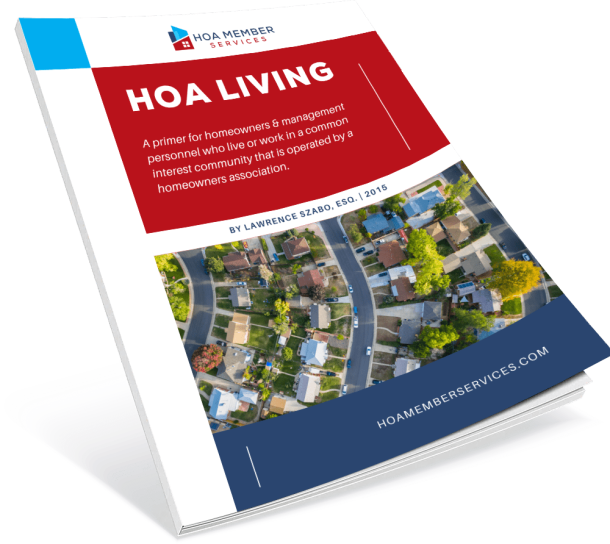Imagine buying your dream home only to realize you also bought into a set of rules, fees, and restrictions you never asked for. That’s the reality of living in a homeowners association (HOA).
While some HOAs deliver real benefits, like maintaining common areas and protecting property values, others feel more like a burden than a safeguard. If you’ve ever found yourself frustrated by strict rules, rising monthly fees, or a board that seems out of touch, you’re not alone.
The idea of dissolving an HOA may sound extreme, even impossible, but in many cases, it is both legal and achievable. It requires patience, planning, and the cooperation of your neighbors, but the payoff can be significant: more freedom, fewer fees, and a community that runs on its own terms.
This guide walks you step by step through how to get rid of an HOA — clearly, directly, and without confusion.

Understanding the Role of a Homeowners Association
Imagine a neighborhood that somehow keeps itself tidy, organized, and more enjoyable to live in — that’s at the heart of why a homeowners association exists.
In essence, an HOA is a legal entity formed to oversee the governing documents, like CC&Rs, bylaws, and articles of incorporation, that bind homeowners together.
It’s governed by an elected HOA board member or group of board members, who enforce HOA rules, collect HOA fees, and manage common areas in the best interest of the HOA community.
Here are the core responsibilities an HOA typically handles:
- Maintaining common areas (landscaping, pools, clubhouses), ensuring shared facilities remain pleasant and functional. In many communities, this is a major appeal to new buyers.
- Enforcing CC&Rs and other rules that help preserve a uniform aesthetic, like curb appeal and exterior standards, supporting property values.
- Collecting HOA fees to fund maintenance, amenities, and sometimes reserve funds for future repairs. These fees can range widely depending on community size and services.
Membership in an HOA is automatic when you buy property within its jurisdiction, so all homeowners are bound by the governing documents, with no opting out.
The HOA board, often made up of volunteers from the neighborhood, oversees decisions, manages budgets, and acts in the community’s best interest.
In many ways, a well-run HOA can provide structure and stability, making a neighborhood feel like a coordinated, cohesive HOA community, rather than a loose collection of individual properties.
On the other hand, that structure and the HOA fees that come with it can feel restrictive or burdensome when mismanaged or out of sync with homeowners’ desires. That’s one of the main reasons a homeowner would want to dissolve an HOA. So let’s get into it.

Reasons Homeowners Want to Dissolve an HOA
Every HOA community is different, but many homeowners eventually ask the same question: Is this really worth it? While HOAs were created to protect neighborhoods, there are several reasons people consider dissolving an HOA and taking back control.
1. Rising HOA Fees
One of the biggest frustrations is money. HOA fees and special assessments often increase over time, sometimes without a clear explanation. Fees can range from modest monthly contributions to hundreds of dollars that strain a family budget.
2. Restrictive Rules
Many HOAs enforce strict rules on everything from exterior paint colors to lawn care. While some believe this preserves property values, others feel suffocated by the lack of freedom.
Rule enforcement is often the top source of disputes between board members and homeowners.
3. Conflicts with the HOA Board
An HOA board member is usually a volunteer, but not all boards operate fairly or transparently. Power struggles, poor management, or favoritism can erode trust.
In some cases, homeowners believe their board members no longer act in the community’s best interest, which becomes a catalyst for exploring the dissolution process.
4. Loss of Trust in Value
Many HOAs justify fees by claiming they safeguard property values. But as NGMA explains, poorly managed HOAs can actually drive values down. When promises of financial protection fail, homeowners start questioning the point of the association.
Ultimately, the decision to pursue dissolving an HOA often stems from frustration, disappointment, or simply a desire for more independence.
Whether it’s financial pressure, unnecessary restrictions, or clashes with leadership, these issues push homeowners to ask if living under an HOA is truly in their community’s best interest.

Reviewing the Governing Documents
If you’re serious about dissolving an HOA, the first step is understanding the fine print. Every HOA community operates under a set of governing documents, and those documents hold the answers to whether dissolution is even possible.
What Are Governing Documents?
At their core, governing documents include:
- CC&Rs (Covenants, Conditions, and Restrictions) – the rules that dictate what homeowners can and cannot do with their property.
- Bylaws – how the HOA board and board members operate, including elections, meetings, and decision-making.
- Articles of Incorporation – which establish the HOA as a legal entity recognized by the state.
You can describe these as the “constitution” of an HOA; they give the board authority and bind homeowners to compliance.
Why They Matter for Dissolution
The dissolution process almost always starts with the governing documents. They specify whether a supermajority vote is needed, how to file a termination agreement, and how outstanding debts or remaining assets must be handled.
Governing documents also dictate how amendments can be made, which is critical if you want to legally unwind the HOA.
The Role of CC&Rs
The CC&Rs are especially important. They not only outline covenants and restrictions on property use, but also spell out what steps are required for dissolving an HOA. For many communities, this process is detailed and demanding, which is why homeowners often need legal counsel to interpret the language.
In short, your governing documents are the roadmap. They may limit you, or they may open the door. Either way, understanding them is essential before taking even the first step toward dissolution.
Can an HOA Be Dissolved?
The short answer: yes, but it isn’t simple. Dissolving an HOA is possible, but the path depends on your state, your community’s governing documents, and the willingness of homeowners to work together.
State Laws Shape the Rules
Every state has its own statutes governing community associations. For example, in California, the Davis-Stirling Act outlines the dissolution process and requires that an HOA formally terminate its corporate status through the Secretary of State.
Other states have their own procedures, but all make clear that dissolving a legal entity like an HOA is a complex process that typically requires formal steps, not just neighborly agreement.
What Governing Documents Require
Your governing documents, especially the CC&Rs, set the foundation for how a dissolution process must be handled. These documents usually spell out:
- The percentage of homeowners needed to approve dissolution (often a supermajority vote)
- How outstanding debts must be paid before final dissolution.
- What happens to common areas and remaining assets once the HOA is gone.
These requirements are legally binding, so skipping steps can invalidate the attempt.
Reality Check: More Than Just a Vote
Even with a supermajority vote, dissolving an HOA often requires filing paperwork with the state and, in some cases, the court system. The process may also involve negotiating how to transfer community services and responsibility for common areas to local government or individual community members.
So yes, an HOA can be dissolved, but it demands persistence, cooperation, and careful navigation of both state laws and your own governing documents.
The Step-by-Step Dissolution Process
The dissolution process is where ideas turn into action. While every state and set of governing documents is different, most paths to dissolving an HOA follow a similar structure.
Below are the common steps, each of which requires coordination, patience, and often professional guidance.
Step 1: Organize Community Members
The first step is to bring community members together. You’ll need widespread support to move forward, and that means open conversations about frustrations, costs, and goals.
Most successful efforts start with a small committee that builds consensus before moving toward a vote.
Step 2: Review Governing Documents and State Laws
Your governing documents, especially the CC&Rs, outline how the HOA can be legally unwound. They usually specify whether a supermajority vote is needed, how to notify members, and how to settle outstanding debts.
At the same time, state law governs how a legal entity like an HOA can be terminated.
Step 3: Consult Legal Counsel
Because this is a complex process, hiring legal counsel is highly recommended. An experienced attorney can interpret unclear rules, anticipate conflicts, and guide you through the court system if required.
Though this involves legal fees, they are often less costly than disputes or mistakes that can arise without guidance.
Step 4: Draft a Petition and Hold a Vote
A petition to dissolve the HOA helps demonstrate interest among homeowners before the formal vote. Once you’re ready, the HOA board or dissolution committee must schedule the vote.
Most governing documents require a supermajority vote (often two-thirds or three-fourths of homeowners) to proceed. Failing to meet the required threshold can stall the entire effort, even if most homeowners are in favor.
Step 5: Resolve Debts and Distribute Assets
No HOA can dissolve while owing money. All outstanding debts — vendor contracts, unpaid maintenance costs, or obligations tied to common areas — must be settled.
If funds remain, remaining assets must be distributed as outlined in the bylaws or by state law. This may mean returning funds to individual homeowners or transferring them to a municipality for community services like snow removal or recreational facilities.
Step 6: File Dissolution Paperwork
Next, the HOA must formally dissolve its corporate structure. This typically involves filing Articles of Dissolution with the state, often through the Secretary of State’s office.
In some cases, the winding-up process may also require approval from the court system. Failing to file correctly can leave an HOA vulnerable to future legal action, even if it has stopped operating.
Step 7: Transition Responsibilities
Once the HOA no longer exists, responsibility for common areas and community maintenance shifts. This may mean local government assumes control, or that homeowners collectively agree on alternatives, such as private agreements for private roads or shared costs for amenities.
Careful planning is crucial here, as dissolved HOAs can leave neighborhoods disorganized and property upkeep uncertain.
Step 8: Finalize and Communicate
The final step is notifying members and closing accounts. A successful dissolution requires transparency: every community member should understand how the process unfolded, what responsibilities remain, and how life in the neighborhood will look going forward.
In practice, the dissolution process is rarely fast or easy. But with cooperation, proper votes, and guidance from legal counsel, homeowners can reclaim control of their community and move forward without an HOA.

Challenges in Dissolving an HOA
While the idea of dissolving an HOA may sound liberating, the reality is rarely straightforward. The dissolution process comes with hurdles that can slow down, or even stop, the effort altogether.
1. Legal Complexity
An HOA is a legal entity, which means undoing it is a complex process. Filing dissolution paperwork, handling outstanding debts, and reallocating common areas require following strict state laws.
Skipping legal requirements can expose homeowners to future legal action, even after the HOA has been dismantled.
2. Costs and Legal Fees
Hiring legal counsel is almost always necessary to interpret governing documents and ensure the process is handled properly. While legal fees may feel like another burden, they are often less expensive than the disputes and liabilities that can arise from cutting corners.
3. Divided Community Members
Not everyone in an HOA community will agree that dissolution is in the best interest of the neighborhood. Some fear that losing structure will harm property values or leave community services underfunded. Disagreements among community members can make reaching the required supermajority vote extremely difficult.
4. Responsibility for Common Areas
Dissolution without a clear plan can lead to confusion and conflict. Once an HOA is dissolved, community maintenance and common areas, like roads, landscaping, or recreational facilities, must still be managed.
If homeowners cannot agree on who takes responsibility, problems such as neglected property or disputes over costs can arise.
In short, the path to dissolving an HOA is paved with obstacles. It demands persistence, cooperation, and careful planning — otherwise, homeowners risk replacing one set of problems with another.
Alternatives to Full Dissolution
For some homeowners, the idea of dissolving an HOA feels drastic. And it’s true, the dissolution process is lengthy, expensive, and disruptive. Fortunately, there are alternatives that may resolve frustrations without eliminating the HOA entirely.
1. Reforming the Governing Documents
Most conflicts stem from the governing documents, especially the CC&Rs. Homeowners can work together to amend restrictive rules or adjust how board members are elected. Amendments can make an HOA more flexible while preserving the benefits of shared structure.
2. Replacing Board Members
Sometimes the problem isn’t the HOA itself but who’s in charge. Electing new HOA board members can bring in leadership more aligned with the community’s best interest. The HOA board is responsible for enforcing policies fairly, managing budgets, and acting transparently, so new leadership can shift the culture without a full dissolution.
3. Adjusting HOA Fees and Services
Another common source of tension is money. Restructuring HOA fees or scaling back community services can relieve financial pressure without scrapping the entire system.
For example, if monthly fees feel excessive, the board may vote to cut non-essential amenities. Plus, transparency in how fees are spent often reduces homeowner frustration.
4. Improving Communication
Sometimes, conflict grows simply from poor communication between board members and community members. Setting up regular meetings, open forums, or online communication platforms can help rebuild trust and resolve disputes before they escalate.
In short, while dissolving an HOA is possible, it’s not always necessary. By reforming leadership, adjusting finances, or revising the governing documents, many communities find a workable balance, without the risks that come with full dissolution.
The Aftermath of HOA Dissolution
So what happens after an HOA officially dissolves? The end of the dissolution process is really the beginning of a new chapter for the community. While some homeowners breathe a sigh of relief, others discover that the real work is only just starting.
Responsibility for Common Areas
Once the HOA is gone, the question of who manages common areas becomes urgent. These may include green spaces, entry signs, or recreational facilities like pools and tennis courts.
Without an HOA, maintenance typically shifts to either the municipality or directly to community members through private agreements. The absence of a proper plan here can lead to disputes and neglected spaces.
Property Values and Market Perceptions
One of the biggest unknowns is how property values will respond. Some buyers see the absence of monthly fees as a major plus, while others worry about declining upkeep.
While HOAs can support home values, a poorly run HOA can actually harm them, so dissolution can cut both ways depending on how well the community organizes afterward.
Financial Wind-Down
Before closure, all outstanding debts must be resolved, and any remaining assets, like reserve funds, distributed according to state law or bylaws. This ensures no loose ends remain that could expose former members to future legal action.
Daily Life Without an HOA
Finally, the rhythm of neighborhood life changes. Community maintenance may now require direct cooperation among homeowners. Tasks once funded by HOA fees, such as landscaping or snow removal, must be arranged independently.
For some, this freedom is empowering; for others, it feels like added responsibility.
Hence, the aftermath of dissolving an HOA isn’t simple; it requires adaptation. But for many, the trade-off is worth it: more independence and a community shaped by the people who live there.

Practical Advice for Homeowners
By now, it’s clear that dissolving an HOA isn’t something that happens overnight. It’s a detailed process that requires persistence, cooperation, and strategic planning.
For homeowners who are serious about pursuing it, here are practical steps to keep in mind.
1. Educate Yourself First
Start by reading your governing documents thoroughly. These are the roadmap for your dissolution process. If the language feels unclear, consult legal counsel early to avoid mistakes.
An experienced attorney can help identify gaps in the rules and clarify responsibilities.
2. Build Consensus with Community Members
You won’t get far without support from fellow community members. Talk openly about concerns with HOA fees, restrictive rules, or leadership issues. Transparency can help align neighbors and secure the supermajority vote most HOAs require.
Setting up town halls or informal gatherings ensures members feel heard.
3. Prepare for Costs
Even though the goal is often to cut expenses, the path there isn’t free. Legal fees and filing costs will come up, and board members may resist. Consider budgeting for both expected and unexpected costs to prevent stalling the process midway.
4. Focus on the Best Interest of the Community
It’s not just about ending fees or frustrating restrictions. Think carefully about how common areas, community maintenance, and remaining assets will be handled. A plan that prioritizes the best interest of all homeowners will build trust and minimize disputes.
5. Seek Guidance When Needed
Finally, don’t go it alone. Lean on legal counsel, state resources, or homeowner advocacy groups. Informed leadership makes all the difference in navigating tough transitions.
With preparation and persistence, homeowners can navigate the dissolution path more smoothly, turning frustration into a fresh start for their community.
How to Get Rid of an HOA: Final Thoughts
Dissolving an HOA is not a decision to take lightly. It requires careful reading of governing documents, coordination among community members, and a willingness to shoulder new responsibilities once the HOA is gone.
From organizing neighbors and securing a supermajority vote, to resolving outstanding debts and redistributing remaining assets, the dissolution process is demanding.
But for many homeowners, the effort is worth it. Removing layers of bureaucracy, eliminating unnecessary HOA fees, and gaining more control over daily life can outweigh the challenges.
The key is to move forward thoughtfully, always keeping the best interests of the community at the center of each decision.
If you’re considering dissolving an HOA or just want to understand your options, you don’t have to navigate it alone. Our site offers in-depth guides, free resources, and unlimited personal support from an experienced HOA attorney through our membership plans.
Join us today and take control of your community’s future!
Frequently Asked Questions
Can you opt out of HOA when buying a house?
In most cases, no. If a property is located within an HOA community, membership is mandatory and tied to the deed. You cannot opt out unless you purchase a home outside of the HOA’s boundaries or within a voluntary HOA. Always review the governing documents before buying, so you fully understand your obligations.
How to get out of an HOA without moving?
Leaving an HOA without selling your home is nearly impossible. Since HOAs are tied to the property deed, membership is automatic. However, you can reduce frustrations by advocating for amendments to the CC&Rs, voting for new leadership, or, in rare cases, joining efforts to pursue the dissolution process.
How to legally annoy your HOA?
Some homeowners look for ways to push back against unfair HOA rules, but attempting to “legally annoy” an HOA often backfires. A better approach is to attend meetings, vote in elections, and work with other community members to reform policies or replace unresponsive board members.
Who enforces deed restrictions when there is no HOA?
If an HOA is dissolved, deed restrictions still exist; they don’t vanish with the HOA. Enforcement usually falls to individual homeowners through private legal action, or in some cases, to local governments if ordinances overlap. This is why planning for enforcement during the dissolving an HOA process is so important. Without clear arrangements, restrictions may go unenforced, leading to disputes among neighbors.


